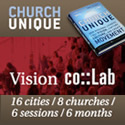Why Do Some Ideas Survive and Others Die?
- Posted by: Todd
- Posted on: Mon, February 19, 2007
- Viewed 39
- (3) comments so far
PRINCIPLE 1: SIMPLICITY
How do we find the essential core of our ideas? A successful defense lawyer says, “If you argue ten points, even if each is a good point, when they get back to the jury room they won’t remember any.” To strip an idea down to its core, we must be masters of exclusion. We must relentlessly prioritize. Saying something short is not the mission — sound bites are not the ideal. Proverbs are the ideal. We must create ideas that are both simple and profound. The Golden Rule is the ultimate model of simplicity: a one-sentence statement so profound that an individual could spend a lifetime learning to follow it.
[Interesting that the ‘simplistic’, ‘simple yet profound’ example they provide is from the Bible. As a matter of fact, the book of Proverbs is full of simple, profound ideas that have hung on over time. As you lead the vision and mission of your church, how do you communicate your ideas? Are they simple, yet profound? Or are they bureaucratic and cumbersome? Could you explain them to your eight year old? If not, your idea probably will not fly… it’s too complex.]
PRINCIPLE 2: UNEXPECTEDNESS
How do we get our audience to pay attention to our ideas, and how do we maintain their interest when we need time to get the ideas across? We need to violate people’s expectations. We need to be counterintuitive. We can use surprise — an emotion whose function is to increase alertness and cause focus — to grab people’s attention. But surprise doesn’t last. For our idea to endure, we must generate interest and curiosity. How do you keep students engaged during the fortyeighth history class of the year? We can engage people’s curiosity over a long period of time by systematically “opening gaps” in their knowledge — and then filling those gaps.
[Again, I find it interesting that Jesus was a master of the unexpected. He was constantly ‘violating people’s expectations’ and being ‘counterintuitive’. As a church leader, do you propose your ideas in a way that generates interest and curiosity? As a leader, you must constantly engage your church’s curiosity, and then, as Chip and Dan say, “Fill in the cracks”.]
PRINCIPLE 3: CONCRETENESS
How do we make our ideas clear? We must explain our ideas in terms of human actions, in terms of sensory information. This is where so much business communication goes awry. Mission statements, synergies, strategies, visions — they are often ambiguous to the point of being meaningless. Naturally sticky ideas are full of concrete images because our brains are wired to remember concrete data. In proverbs, abstract truths are often encoded in concrete language: “A bird in hand is worth two in the bush.” Speaking concretely is the only way to ensure that our idea will mean the same thing to everyone in our audience.
[“Ambiguous to the point of being meaningless”. I love it. Is that not a picture of many churches today? How are you doing in this area? Is your idea succinct? Does everyone understand your idea? Is everyone on the same page? If not, your communication will flounder.]
PRINCIPLE 4: CREDIBILITY
How do we make people believe our ideas? When the former surgeon general C. Everett Koop talks about a public-health issue, most people accept his ideas without skepticism. But in most day-to-day situations we don’t enjoy this authority. Sticky ideas have to carry their own credentials. We need ways to help people test our ideas for themselves — a “try before you buy” philosophy for the world of ideas. When we’re trying to build a case for something, most of us instinctively grasp for hard numbers. But in many cases this is exactly the wrong approach. In the sole U.S. presidential debate in 1980 between Ronald Reagan and Jimmy Carter, Reagan could have cited innumerable statistics demonstrating the sluggishness of the economy. Instead, he asked a simple question that allowed voters to test for themselves: “Before you vote, ask yourself if you are better off today than you were four years ago.”
[Interesting thoughts here. In order to prove our point and make our ideas concrete (see principle #3), we often resort to ‘just the facts’. Motivating people in the church with your ideas and vision is something that requires authority; and that’s tough… How do you get people to ‘test your ideas for themselves’? How do you get credibility as you communicate your vision and ideas?]
PRINCIPLE 5: EMOTIONS
How do we get people to care about our ideas? We make them feel something. Research shows that people are more likely to make a charitable gift to a single needy individual than to an entire impoverished region. We are wired to feel things for people, not for abstractions. Sometimes the hard part is finding the right emotion to harness.
[Using emotion without manipulation… that’s a tough one for many church leaders. How do you make people feel for something?]
PRINCIPLE 6: STORIES
How do we get people to act on our ideas? We tell stories. Firefighters naturally swap stories after every fire, and by doing so they multiply their experience; after years of hearing stories, they have a richer, more complete mental catalog of critical situations they might confront during a fire and the appropriate responses to those situations. Research shows that mentally rehearsing a situation helps us perform better when we encounter that situation in the physical environment. Similarly, hearing stories acts as a kind of mental flight simulator, preparing us to respond more quickly and effectively.
[The art of storytelling is something that most of our churches need to do better. Stories about vision; life change and more. They help communicate ideas in very meaningful ways.]
You can read more on the book here...
FOR DISCUSSION: So… what do you think of these thoughts about making ideas stick? What was one of your best ideas that had the most stickiness? Why? And what idea did you have that flopped? Was it because of one of these six reasons?
What makes an idea stick? Chip Heath and Dan Heath recently wrote a book entitled, “Made to Stick: Why Some Ideas Survive and Others Die”. During their research, they took at close look at hundreds of ideas and came up with six principles that they said they saw over and over again that made ideas ‘sticky’. Let’s take a quick look at each of the six, and how they might relate to us in our church leadership settings. Here they are...
Comments
if you want a Globally Recognized Avatar (the images next to your profile) get them here. Once you sign up, they will displayed on any website that supports them.






Pastor Bill on Mon, February 19, 2007
Friends
Interesting point of referral to “maleness” of the front cover - - - - - “duct tape”! Are guys the only ones who need instruction? http://www.mondaymorninginsight.com/images/smileys/smile.gif
There are all good ideas, and just as one famous writer wrote: “he who does not study history will “maybe” learn when repeated” (my paraphrase) For guidance, I usually consult one of our earliest writers of Judeo-Christian tradition - the Holy Spirit as He wrote in the Holy Scripture. I find the Gospels full of wisdom and in comparison to writers such as Lewin, Tannenbaum-Schmidt, Fiedler; House-Mitchell,Vroom-Yetten, and their theories on management I do see much difference (except for the secular outlook of the latter writters) than the original source for management. There are many interesting writings found in those some-odd 32,000 verses. It is good to support man’s writings, but with all the many, many, many theories on management, let us remember the best manager of all…....
Jim on Tue, February 20, 2007
Todd;
I think you’ve hit something more meaningful and profound than the response indicates. The world of ideas is definitely the world of making “things” happen. The think tank generation of Japan, China, Bill Gates etc. would love this article. Why? Because what the mind conceives technology can now produce.
In church of Modernity focused not on ideas but theolody and sound doctrine. This created security and stability among church goers. It helped maintain a balance of the threat of world annihilation and eternal separation from God. Ideas were not the handiwork of church leaders, boards, denominations. They were for the industries of Hollywood, auto-manufacturers and advances in medicine.
However, today a church without innovative ideas is a church on death’s door and threat of extinction.
I like the comment Bill made about being a student of History. Unfortunately we’ve studied history and failed to learn it’s lessons. History, for the most part, hates innovation and change. Appalled at that statement? What did history try to do to Galileo, Da Vinci, Jesus, Michaelangelo, Bach, Beethoven, Edison, even Bill Gates. Every inventer, innovator has been met with oppostion, frustration and at times down right sabotage.
Any one ever hear of the Fulton street revival in New York City? I just heard about it a couple of weeks ago. A christian business man, felt the call to just pray for the spiritually lost in NY. He asked his own denomination to back him. Instead they shunned and criticized him. So he went to other denominations who climbed on his vision. His vision was simple, meet in a church at 12noon and simply pray (once a week). The first week it was just him, the second there were five, the third week 12 and from there it grew to over fifthy thousand prayer meetings and individuals and lasted for almost 150 years. BUT, the leadership opposed it. It was estimated that over a million people came to know Jesus Christ as Savior for the first time during that period.
The 21st century, is the century of ideas, paradigm shifts, diminishing traditional church attendance and resurgence of home churches. It will also reveal that the 21st century will be the general of the most spiritually seeking generation of all time. Seeking and finding what is where we come in. Will we work on our “sticky” ideas to win some, or go back to the way we’ve always done it?
The challenge is before us!
zig ziegfried on Sun, February 22, 2009
“Made to Stick” doesn’t just provide a checklist by which you judge the merits of an idea, it’s also as much of the creative process by which you originate ideas. Like a swiss army knife, it ends itself as much to the creative process as well as the means to test it “after” you’ve hatched ‘the idea’. That’s a real mental power tool that requires no electrical outlet or air compressor. And a must for any person who desires to succeed in the knowledge and idea economy, where the serf can become a King. Good stuff indeed. I think the bible is full of ‘sticky idea’. Look at the parable of the talents. It’ too has all the key elements that the Heaths talk about. Translating those components into contemporary language that people and non believers can relate to would allow pastors to dust that powerful story off and make it STICK and could be an excellent way to introduce the power of the scriptures to people who otherwise think it’s somehow outdated ... now that you’ve been the power tool, that very parable says ... you better do something purposeful with it .. or suffer the same fate as the 3rd man in the story when Jesus condemns him to damnation and nashing of teeth.
Page 1 of 1 pages
Post a Comment